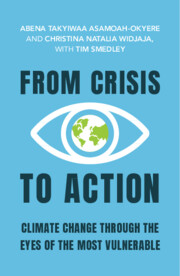Glossary
Key terms and bodies
- Term
Definition
- $100 billion climate finance pledge
In 2009, developed countries agreed to mobilise US$100 billion annually by 2020 to support climate action in developing countries. In 2015, under the Paris Agreement, Parties agreed to extend this goal out to 2025 and to set a new finance goal, from a floor of US$100 billion per year, for after 2025, taking into account the needs and priorities of developing countries.
- Adaptation
- Blue Bond
A Blue Bond is a debt instrument issued by governments, development banks or others to raise capital from impact investors to finance marine and ocean-based projects that have positive environmental, economic, and climate benefits.
- Carbon markets
A specialised financial market through which carbon credits can be bought and sold. Carbon credits are essentially permits that allow the purchaser to emit a certain amount of carbon dioxide or other greenhouse gas. Entities who reduce emissions can then trade their carbon credits. Typically, a carbon credit is equal to one metric tonne of carbon dioxide.
- Climate Prosperity Plans (CPPs)
An initiative led by the CVF-V20 designed to integrate strategies for mitigating climate risks while capitalising on investment opportunities presented by the transition to a green economy. CPPs address critical gaps in the international financial system, advocating for mechanisms that reduce the cost of capital, facilitating investment in renewable energy and resilience.
- COP
Conference of the Parties. The COP is the main decision-making body of the UNFCCC and includes representatives of all the countries that are signatories to the UNFCCC. The COP assesses the effects of measures introduced by the Parties to limit climate change against the overall goal of the UNFCCC.
- Global Shield against Climate Risks
The G7 and the V20 Finance Ministers set up a Global Shield against Climate Risks, at COP27 in 2022, to assist countries that are particularly affected by climate change in improving their financial protection against climate risks.
- Global Stocktake
A process established by the Paris Agreement to assess collective progress towards achieving the Agreement’s long-term goals. The stocktake is conducted every five years and assesses the progress of all countries in implementing their NDCs and achieving the Paris Agreement’s long-term goals.1
- Greenhouse gases
Gases that trap heat in the atmosphere and contribute to the greenhouse effect causing global warming.
- Intergovernmental Panel on Climate Change (IPCC)
A scientific body under the auspices of the United Nations, set up at the request of member governments, dedicated to the task of providing the world with an objective, scientific view of climate change and its political and economic impacts.
- Loss and Damage Fund
The Loss and Damage Fund mechanism was a landmark agreement established at the UN Climate Change Conference COP27, designed to provide funding for vulnerable countries severely impacted by climate disasters. At COP28, delegates agreed on the operationalisation of the fund to compensate vulnerable countries coping with loss and damage caused by climate change.2
- Mitigation
Actions to reduce greenhouse gas emissions and stabilise the climate system.
- Nationally Determined Contributions (NDCs)
Climate actions and emissions reduction targets pledged by countries under the Paris Agreement.
- The Paris Agreement
An historic legally binding international treaty struck at COP21, held in Paris in 2015, adopted by all 196 Parties. It entered into force on 4 November 2016. Its overarching goal is ‘to limit the temperature increase to 1.5°C above pre-industrial levels.’3
- Sustainable Insurance Facility
A project pipeline development facility to assist V20 membership in scoping the financial protection needs of micro-, small-, and medium-sized enterprises (MSMEs) in the context of climate change and to facilitate project concept and proposal development under the leadership of V20 Finance Ministries.
- UNFCCC
The UNFCCC secretariat (UN Climate Change) is the United Nations entity tasked with supporting the global response to the threat of climate change. UNFCCC stands for United Nations Framework Convention on Climate Change.
